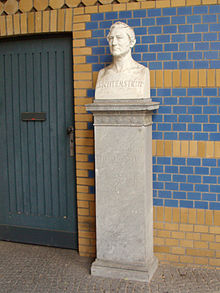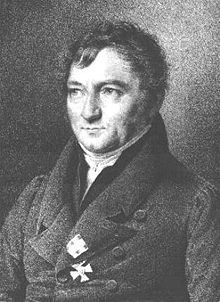- Martin Lichtenstein
-
Martin Hinrich Carl Lichtenstein (January 10, 1780 - September 2, 1857) was a German physician, explorer, zoologist, and herpetologist.
Biography
Lichtenstein was the son of Anton August Heinrich Lichtenstein, born in Hamburg. He studied medicine at Jena and Helmstedt. Between 1802 and 1806 he travelled in southern Africa, becoming the personal physician of the Governor of the Cape of Good Hope. In 1810 he published Reisen im südlichen Afrika; as a result, he was appointed professor of zoology at the University of Berlin in 1811, and appointed director of the Berlin Zoological Museum in 1813. In 1829, he was elected a foreign member of the Royal Swedish Academy of Sciences.
He died after a duel fought at sea off Kiel.[citation needed]
Legacy
 Monument to Martin Lichtenstein in Berlin Zoological Garden
Monument to Martin Lichtenstein in Berlin Zoological Garden
Lichtenstein was responsible for the creation of Berlin's Zoological Gardens in 1841, when he persuaded King Frederick William IV of Prussia to donate the grounds of his pheasantry. He also published Johann Reinhold Forster's manuscripts for Descriptiones animalium in 1844.
In the field of herpetology he described many new species of amphibians[1] and reptiles[2].
Among species named by Lichtenstein are included the Australian King Parrot (Alisterus scapularis) and the Cape night adder (Causus rhombeatus Lichtenstein, 1823).
In 1859 Italian herpetologist, Giorgio Jan, named the forest night adder (Causus lichtensteinii) in honor of Martin Lichtenstein.
References



This article about a German zoologist is a stub. You can help Wikipedia by expanding it. This article about an entomologist is a stub. You can help Wikipedia by expanding it.


